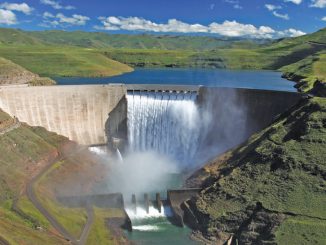
Owing to the accelerated nationwide thrust to renewables, the central and state grid infrastructure is in the process of a complete overhaul. As the country moves towards the concept of “one frequency, one grid”, upgradation of the existing grid networks has become imperative. To this end, Maharashtra State Electricity Transmission Company (Mahatransco), one of the largest transmission companies in India, is currently undergoing grid modernisation amidst a host of challenges.
Current infrastructure
Mahatransco’s transmission network spans 0.3 million square km. Power is transmitted through a 48,675 ckt. km extra-high voltage (EHV) line network that includes 697 EHV substations and has a transformation capacity of 137,056 MVA. The transco catered to a peak demand of 23,055 MW and energy of 147,878 MUs in 2016-17. As compared to the 2000-01 levels, the peak demand increased by 87 per cent and the energy requirement by 141 per cent, indicating the demographic and industrial growth in the state. The state’s installed generation capacity currently stands at 41.2 GW, including 26 GW of thermal power, 3.38 GW of hydropower, 3.13 GW of gas-based power, 756 MW of nuclear power and 7.5 GW of renewable power.
Impact of large-scale renewable energy integration
According to Sanjay Kulkarni, executive director, Mahatransco, underdrawal is one of the biggest challenges facing the grid in Maharashtra, on account of the upcoming renewable energy capacity. Meanwhile, despite efforts at renewable energy forecasting and scheduling, variability leads to a violation of the deviation settlement mechanism limits, penalising the generator for over- and under-injection of power. Further, the maximum wind power is injected during the monsoon season (June-September). However, since it is not separately accounted for, its contribution to underdrawal and backing down cannot be established or quantified. According to Kulkarni, modernising the grid requires detailed planning and execution. Mahatransco is executing the modernisation works in a planned manner, with a well-defined strategy and components.
Transmission system planning
According to Kulkarni, Mahatransco is undertaking grid infrastructure planning for the state as a whole for the long term (15-20 years). Moreover, planning for the evacuation of the upcoming generation and meeting the load growth in coordination with generation and distribution are being done for the next five years, as envisaged in the state renewable energy policy (2015), which targets adding 14,500 MW of renewable energy capacity by 2022. The transmission infrastructure planning is being undertaken in tandem with the central transmission network plans.
Transmission operations and maintenance
The second part of Mahatransco’s grid modernisation plan involves the establishment of a robust and reliable backbone communication system using an optic fibre network and the development of preventive and proactive maintenance practices for enhancing system availability. Meanwhile, a reduction in transmission losses and reactive power compensation are deemed priorities for the network, and will be undertaken through technology improvements and capacity building.
Project execution
Kulkarni believes that project execution is as critical to the success of the modernisation efforts as is planning. Therefore, the transco is aiming to complete the transmission projects within the stipulated time frame without cost or time overruns. To this end, it plans to overcome right-of-way hurdles in the construction of lines and will use new technologies such as monopole towers, high-tension low-sag conductors and gas-insulated substations.
Transmission tariff rationalisation
The final part of the grid modernisation plans caters to the techno-commercial component. Kulkarni notes that the ongoing efforts will need to be rationalised in order to pass on the minimum cost effect to consumers. This will be done by optimising the capital expenditure, better transmission asset management and improvement in the operational efficiency of the transmission business.
The way forward
According to Kulkarni, the evacuation of green energy through the state grid will be possible with the establishment of a renewable energy management centre, which is currently in the tendering phase and will be completed in the next 16-18 months. Meanwhile, for better scheduling and forecasting of renewable energy, modern technology with weather forecasting capabilities will be used, while a regulatory framework will be put in place for addressing deviations. Moreover, about 86 new substations have been envisaged over the next five years by the transco. The efforts undertaken by Mahatransco will translate into technology upgradation and capacity development in Maharashtra, giving the state an opportunity to play a bigger role in the country’s green transformation plans.



